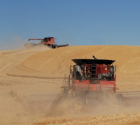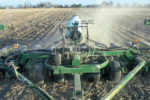Advertise Follow Us
Articles Tagged with ''Frank lessiter''
Spreading Residue Is Serious Business Across The Pond
Western European farmers and manufacturers are taking residue management more seriously than their counterparts in North America.
Read More
No-Tilling Is No Remedy For A Shortage Of Moisture
While finding ways to save moisture in a drought is important, the real benefits of no-till are most apparent with normal weather conditions.
Read More
Extend Your Cropping Boundaries
With no heavy tillage equipment to move, this father and son are cropping land 210 miles away from their home base.
Read More

.png?height=125&t=1731942302&width=150)







